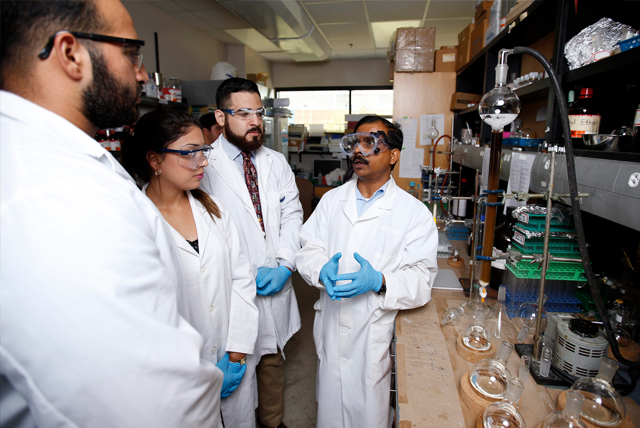Document Type
Article
Publication Date
10-15-2014
Abstract
The binding of Cr(III) and Cr(VI) to synthetic nano-magnetie particles synthesized under open vessel conditions and a microwave assisted hydrothermal synthesis techniques was investigated. Batch studies showed that the binding of both the Cr(III) and Cr(VI) bound to the nano-materials in a pH dependent manner. The Cr(III) maximized at binding at pH 4 and 100% binding. Similarly, the Cr(VI) ions showed a maximum binding of 100% at pH 4. The data from the time dependency studies showed for the most part the majority of the binding occurred within the first 5 minutes of contact with the nanomaterial and remained constant thereafter. In addition, the effects of the possible interferences were investigated which showed some effects on the binding of both Cr(III) and Cr(VI). However, the interferences never completely eliminated the chromium binding. Isotherm studies conducted at room temperature showed the microwave synthesized nanomaterials had a binding capacity of 1208 ± 43.9 mg/g and 555 ± 10.5 mg/g for Cr(VI) and Cr(III), respectively. However, the microwave assisted synthesized nanomaterials had capacities of 1705 ± 14.5 and 555± 10.5 mg/g for Cr(VI) and Cr(III), respectively. XANES studies showed the Cr(VI) was reduced to Cr(III), and the Cr(III) remained as Cr(III). In addition, the XANES studies indicated that the chromium remained coordinated in an octahedral arrangement of oxygen atoms.
Recommended Citation
Parsons JG, Hernandez J, Gonzalez CM, Gardea-Torresdey JL. Sorption of Cr(III) and Cr(VI) to High and Low Pressure Synthetic Nano-Magnetite (Fe3O4)Particles. Chem Eng J. 2014;254:171-180. doi:10.1016/j.cej.2014.05.112
Creative Commons License

This work is licensed under a Creative Commons Attribution-NonCommercial-No Derivative Works 4.0 International License.
Publication Title
Chemical Engineering Journal
DOI
10.1016/j.cej.2014.05.112



Comments
Original published version available at doi.org/10.1016/j.cej.2014.05.112